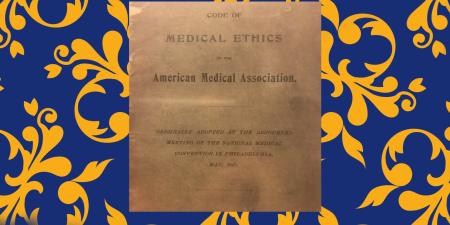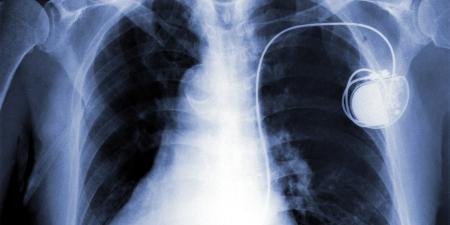In 2000, it was estimated that 20 to 25 million Americans had an implanted device,1 but between 2003 and 2007, less than 1% of devices underwent the 2 large, human clinical trials mandated for US Food and Drug Administration (FDA) pharmaceutical approval.2,3 Only high-risk devices that are lifesaving or life-supporting are required to submit clinical data to demonstrate their safety and efficacy, also known as the premarket approval (PMA) pathway. Many devices are cleared through premarket notification (PMN), also known as the 510(k) pathway, which is permitted for low-to-moderate risk devices or those that are, according to manufacturers, essentially equivalent to those already on the market.
Widespread patient harm due to medical devices has been chronicled in recent journalistic exposés,4,5,6,7 congressional hearings,8 and the 2018 documentary, The Bleeding Edge.9 Examples of such harms include cobalt poisoning due to artificial hips, inadequate or excessive delivery of insulin from implantable pumps, and spinal cord stimulators that deliver painful shocks. The device industry and its regulators are now facing increased scrutiny for lax premarket clearance standards,10,11 suspect advertising practices,12,13 undisclosed conflicts of interest,14,15,16,17 deficient postmarket surveillance,18,19 and inappropriate and inaccurate reporting of injuries and deaths.20,21,22,23
The FDA must balance timely access to life-extending or life-improving technologies with rigorous safety. The US device approval process is already longer and more stringent than that of Europe, leading many physicians to lament their inability to offer pioneering solutions to disease and disability.24 A 2010 industry survey reported that PMA devices take on average 54 months from first communication to reach American patients compared with 11 months for European patients. Similarly, PMN pathway devices take on average 31 months from first communication to be cleared in the United States compared with about 7 months in Europe.25 Moreover, regulatory changes to further improve safety could make devices prohibitively expensive and therefore are unlikely to be supported by patients, physicians, and payers.26,27,28
Device industry critics argue that most serious recalls have involved 510(k)-cleared devices29 and that public protection requires that more devices undergo PMA, with submission of clinical data. Given that medications with adverse effects can usually be discontinued without additional risk, while device removal can cause serious complications, it might be reasonable to expect implanted devices to meet even higher safety benchmarks than drugs. Additionally, patients harmed by FDA-approved drugs can sue pharmaceutical companies, but the Riegel v Medtronic Supreme Court precedent leaves those harmed by FDA-cleared devices without recourse to seek damages from device manufacturers.30
Industry advocates, however, point out that less than 1% of all 510(k) and PMA devices that were cleared or approved between 2004 and 2009 have ever been subject to a Class I recall (utilized for major injuries or death).25 Conducting clinical studies for implantable devices is often more complicated and expensive than for drugs and can be ethically problematic. For example, the closest equivalent to a placebo control pill would be sham surgery, which carries considerably more risk.31 Even with painstaking design and testing, devices can cause harm if used improperly; companies tend to argue that it’s inappropriate for them to be held liable if physicians make poor patient-selection decisions or lack the motor skills needed to implant or operate a device. Device makers appreciate the need for evidence-based approval, but they call for FDA reviewers with more field-specific expertise, as well as for more transparent and predictable regulatory processes in order to efficiently bring their devices to US markets.25
How might regulators exercise sufficient caution without stifling innovation? Which processes should be used to mitigate bias in device research and development and user education, when most experts have industry ties? Which entities should bear ultimate responsibility for prevention and compensation for patient harm from devices? This issue of the AMA Journal of Ethics invites clinicians, researchers, device representatives, and patient-safety champions to reflect on these and other questions.
References
-
Marwick C. Implant recommendations. JAMA. 2000;283(7):869.
-
Institute of Medicine. Medical Devices and the Public’s Health: The FDA 501(k) Clearance Process at 35 Years. National Academies Press; 2011.
-
Development and approval process: drugs. US Food and Drug Administration. Reviewed October 28, 2019. Accessed June 1, 2021. https://www.fda.gov/drugs/development-approval-process-drugs
-
Kaplan S. FDA deal would relax rules on reporting medical device problems. New York Times. July 11, 2017. Accessed November 24, 2020. https://www.nytimes.com/2017/07/11/health/fda-medical-device-problems-rules.html
-
Allen M, Pierce O. Knee replacement device unapproved, but used in surgery. New York Times. February 6, 2015. Accessed November 24, 2020. https://www.nytimes.com/2015/02/08/business/knee-replacement-device-unapproved-but-used-in-surgery.html
-
Implant files. International Consortium of Investigative Journalists. Accessed November 24, 2020. https://www.icij.org/investigations/implant-files/
-
Young R. Lax oversight, lack of clinical trials mean some medical devices more likely to injure than cure. WBUR. Updated January 10, 2018. Accessed November 24, 2020. https://www.wbur.org/hereandnow/2018/01/10/medical-devices-danger-within-us-jeanne-lenzer
-
Grady D, Rabin RC. Women at breast implant hearing call for disclosure of safety risks. New York Times. March 25, 2019. Accessed November 24, 2020. https://www.nytimes.com/2019/03/25/health/breast-implants-cancer.html
-
Dick K. The Bleeding Edge. Netflix; 2018.
-
Mazer D, Curfman GD. 21st Century Cures Act lowers confidence in FDA-approved drugs and devices. Health Affairs Blog. February 14, 2017. Accessed November 24, 2020. https://www.healthaffairs.org/do/10.1377/hblog20170214.058710/full/
-
FDA should take steps to ensure that high-risk device types are approved through the most stringent premarket review process. US Government Accountability Office. January 15, 2000. Accessed November 24, 2020. https://www.gao.gov/products/gao-09-190
-
Zupello S. The latest Instagram influencer frontier? Medical promotions. Vox. February 15, 2019. Accessed November 24, 2020. https://www.vox.com/the-goods/2019/2/15/18211007/medical-sponcon-instagram-influencer-pharmaceutical
-
Farmer B. Sales reps may be wearing out their welcome in the operating room. NPR. November 23, 2018. Accessed November 24, 2020. https://www.npr.org/sections/health-shots/2018/11/23/659816082/sales-reps-may-be-wearing-out-their-welcome-in-the-operating-room
-
Liu JJ, Bell CM, Matelski JJ, Detsky AS, Cram P. Payments by US pharmaceutical and medical device manufacturers to US medical journal editors: retrospective observational study. BMJ. 2017;359:j4619.
-
Editorial Board. Medicine’s financial contamination. New York Times. September 14, 2018. Accessed December 29, 2020. https://www.nytimes.com/2018/09/14/opinion/medicines-financial-contamination.html
-
Lundh A, Lexchin J, Mintzes B, Schroll JB, Bero L. Industry sponsorship and research outcome. Cochrane Database Syst Rev. 2017;2(2):MR000033.
- Rose SL, Highland J, Karafa MT, Joffe S. Patient advocacy organizations, industry funding, and conflicts of interest. JAMA Intern Med. 2017;177(3):344-350.
-
Graham J, Cooper S, Mackeen AD. How safety concerns about Essure reveal a path to better device tracking. Health Affairs Blog. October 15, 2015. Accessed December 29, 2020. https://www.healthaffairs.org/do/10.1377/hblog20151015.051219/full/
-
Food and Drug Administration: FDA faces challenges meeting its growing medical product responsibilities and should develop complete estimates of its resource needs. US Government Accountability Office. June 19, 2009. Accessed December 29, 2020. https://www.gao.gov/products/gao-09-581
-
Jewett C, de Marco H. Hidden FDA reports detail harm caused by scores of medical devices. KHN. March 7, 2019. Accessed December 29, 2020. https://khn.org/news/hidden-fda-database-medical-device-injuries-malfunctions/
-
Jewett C. FDA to end program that hid millions of reports on faulty medical devices. PBS News. May 5, 2019. Accessed December 29, 2020. https://www.pbs.org/newshour/health/fda-to-end-program-that-hid-millions-of-reports-on-faulty-medical-devices
-
Lupkin S. Five things we found in the FDA’s hidden device database. KHN. June 27, 2019. Accessed December 29, 2020. https://khn.org/news/five-things-we-found-in-the-fdas-hidden-device-database/
-
Terhune C. FDA faults hospitals for failing to report safety problems with medical devices. NPR. October 28, 2016. Accessed December 29, 2020. https://www.npr.org/sections/health-shots/2016/10/28/499732331/fda-faults-hospitals-for-failing-to-report-safety-problems-with-medical-devices
- Maak TG, Wylie JD. Medical device regulation: a comparison of the United States and the European Union. J Am Acad Orthop Surg. 2016;24(8):537-543.
-
Makower J, Meer A, Denend L. FDA impact on US medical technology innovation: a survey of over 200 medical technology companies. MedTech Europe. November 2010. Accessed July 21, 2021. http://www.medtecheurope.org/wp-content/uploads/2015/09/01112010_FDA-impact-on-US-medical-technology-innovation_Backgrounder.pdf
-
Neugebauer EAM, Rath A, Antoine SL, et al. Specific barriers to the conduct of randomised clinical trials on medical devices. Trials. 2017;18:427.
-
Wimmer NJ, Robbins S, Ssemaganda H, et al. Assessing the cost burden of United States FDA-mandated post-approval studies for medical devices. J Health Care Finance. 2016;2016(Spec Features).
- George BP, Venkataraman V, Dorsey ER, Johnston SC. Impact of alternative medical device approval processes on costs and health. Clin Transl Sci. 2014;7(5):368-375.
- Zuckerman DM, Brown P, Nissen SE. Medical device recalls and the FDA approval process. Arch Intern Med. 2011;171(11):1006-1011.
-
Riegel v Medtronic, Inc, 552 US 312 (2008).
-
Outlining the key differences between medical device and drug trials. Clinical Trials Arena. August 12, 2015. Updated July16, 2018. Accessed October 13, 2020. https://www.clinicaltrialsarena.com/news/outlining-the-key-differences-between-medical-device-and-drug-trials-to-determine-how-device-trials-can-best-be-run-effectively-4644599-2/



